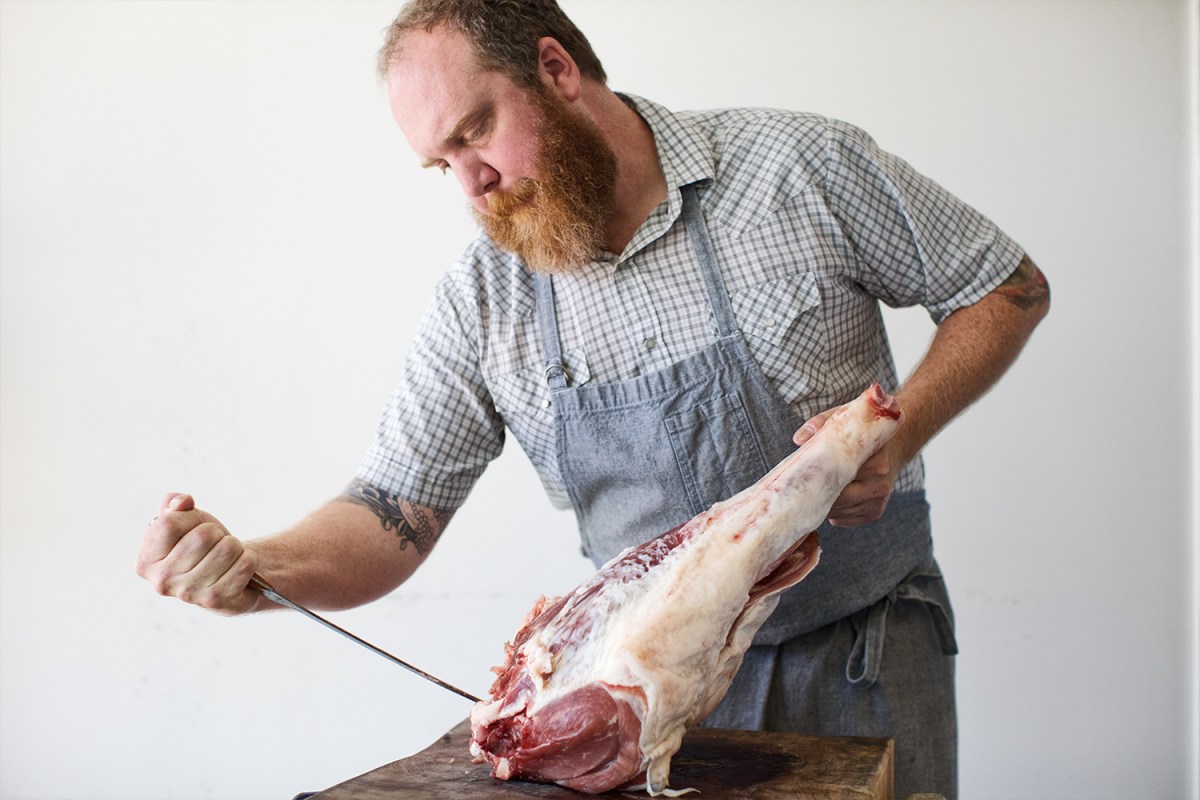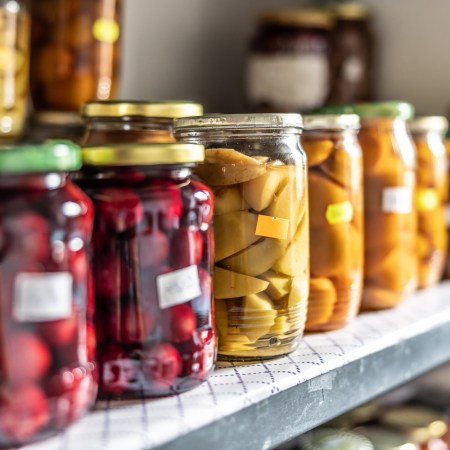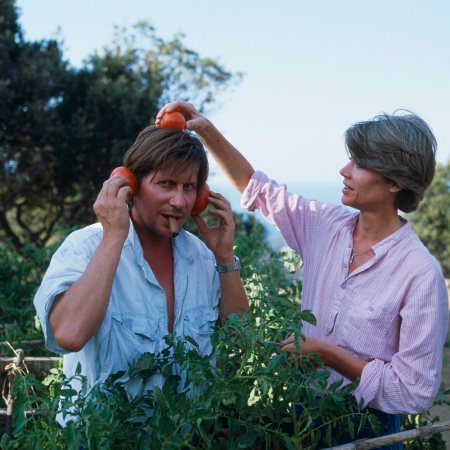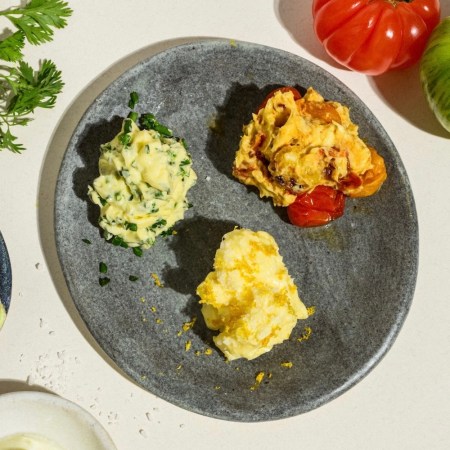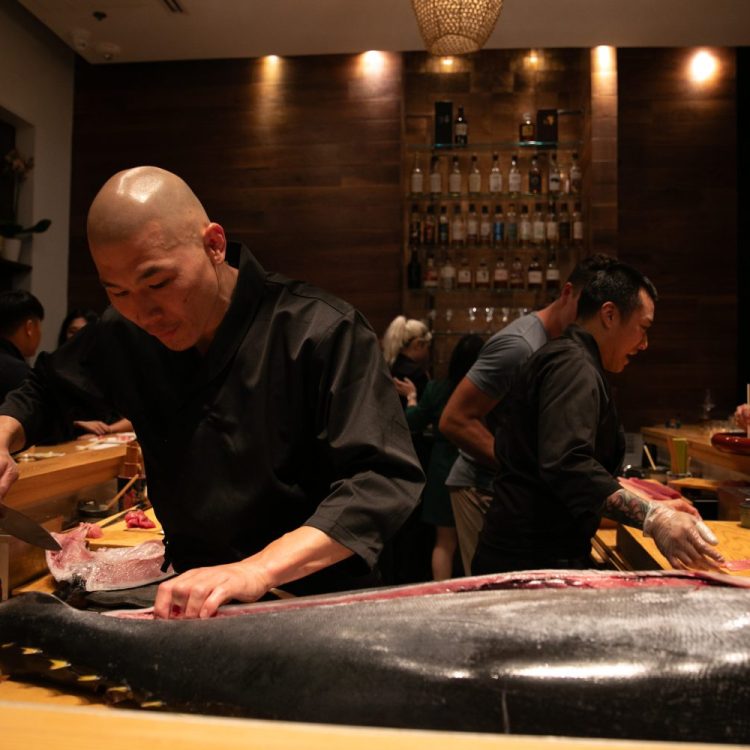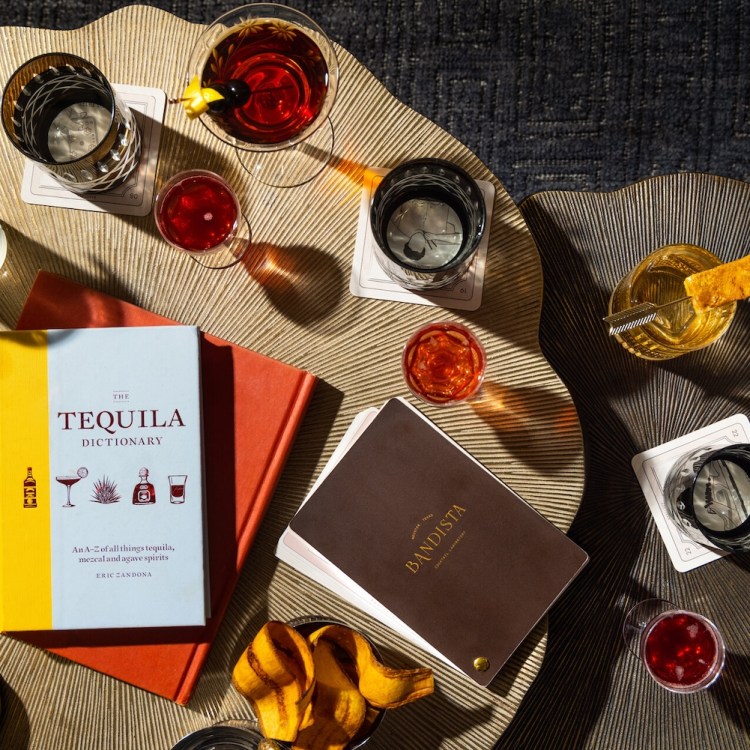Unless you live in the woods or make your living from the land, wild hogs probably aren’t on your radar. But they should be. First introduced to North America by European explorers in the 1500s, these scrappy omnivores proliferated, their population boosted by high reproductive rates, impressive adaptability and an unfussy diet that includes nearly everything in their path.
Texas Parks & Wildlife estimates that nearly half of the country’s six million wild pigs live in Texas, with high concentrations also located in California and the southeastern states. That’s a lot of pigs, especially when you consider that one animal is responsible for about $300 in costs each year—they damage soil, roots and crops, taint water supplies and degrade the native habitats of other species. All told, wild hogs are one of the most invasive species in the world. Fortunately, they’re also delicious.
Jesse Griffiths is the chef and owner of Dai Due, an Austin restaurant known for its whole animal butchery and dedication to local ingredients. Raised in North Texas, Griffiths has been working in restaurants since age 15. After traveling through Europe and Mexico and witnessing what other cultures were doing with their local resources, he became inspired to attempt a similar model in Austin.
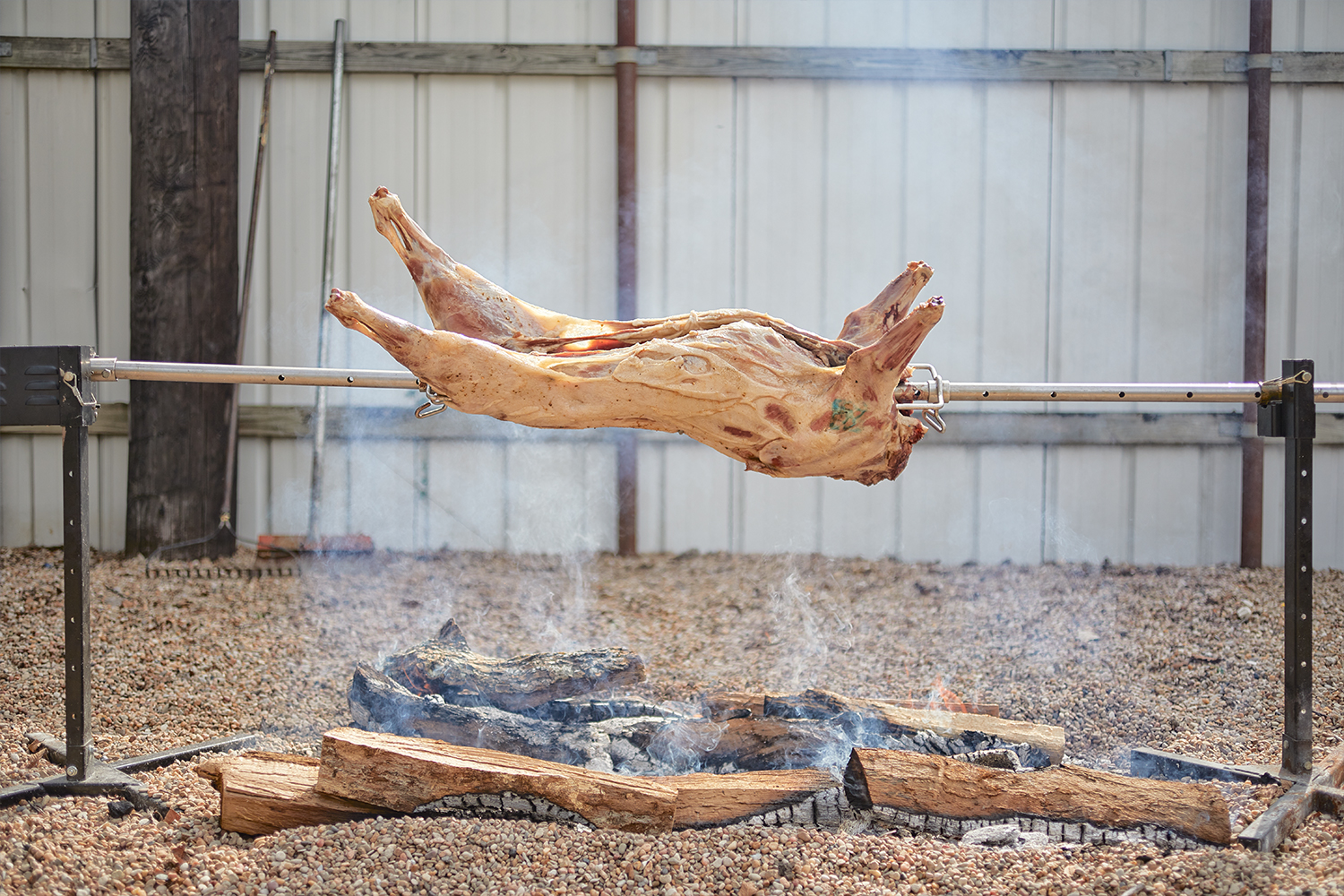
Open since 2006, Dai Due serves more than 300 feral hogs annually, an effort that Griffiths compares to “emptying a porcine ocean with a teaspoon.” The chef is doing his part (he even ate wild boar tacos right before our call), but he needs help.
Griffiths wrote The Hog Book: A Chef’s Guide to Hunting, Preparing and Cooking Wild Pigs to inspire others to join him in this herculean task. It’s available to pre-order now and should begin shipping in August.
“I’m trying to encourage people to eat feral hogs,” he says, noting their status as an invasive pest. “It’s necessary for our society to control their population, and hunting and eating them is the best way to do this. Buying domestic pork might taste good, but it doesn’t achieve the same goal.”
The Hog Book is an instructive tome that breaks down the animals into a simple set of categories based on size, sex and diet. Griffiths stresses that grouping all wild hogs together is a disservice to the animal and the eater. Little piglets and hulking forest monsters vary in more ways than appearance. Younger hogs are typically more tender than older hogs. Boars tend to be leaner than sows, with a darker, richer meat. And animals snacking on tree nuts like acorns and pecans will have a sweeter, more buttery flavor than those scrounging for sustenance on arid prairies.
The book covers helpful tips on locating and hunting hogs and includes diagrams for building a simple trap. Graphic photos show detailed step-by-step sequences of cleaning and processing the animals, and four butchery sections progress from small to medium-size hogs and from sows to boars. One hundred and fifteen recipes are peppered throughout the text.
After reading the book, Griffiths hopes you feel confident enough to hunt or trap, clean, store, butcher and cook wild hogs, with the ability to analyze the animal in front of you and know how best to enjoy it. He believes that this hands-on method gives you greater appreciation for your food and where it comes from. “Hunting is a lot about resources,” he says. “It’s a direct connection to your food.” He compares it to having chickens in your backyard. Once you’ve had fresh eggs, it’s hard to go back to the mass-produced variety.
“Wild hogs tend to be leaner and denser than grocery store pork,” he says. “They’re more intensely flavored, but they can be tougher and require longer cooking than domestically raised pigs.”
Griffiths doesn’t have a go-to recipe for hogs in his back pocket because the animals vary considerably from one to another. An eight-pound piglet and a 300-pound boar require different preparations to best highlight their unique qualities. But one mainstay dish at Dai Due is Boar Confit, a versatile plate that works well with medium-to-large hogs. Cured meat is braised in pork lard, then shredded, formed into a cube, seared and served in hog broth. This preparation creates a crisp exterior with a melting, fatty interior that soaks up the broth.
Garnishes change throughout the year per what’s in season, but his favorite is an autumnal combination of persimmons, apples and chilies that balances the richness of the confit with the sweet fruit and spicy peppers.
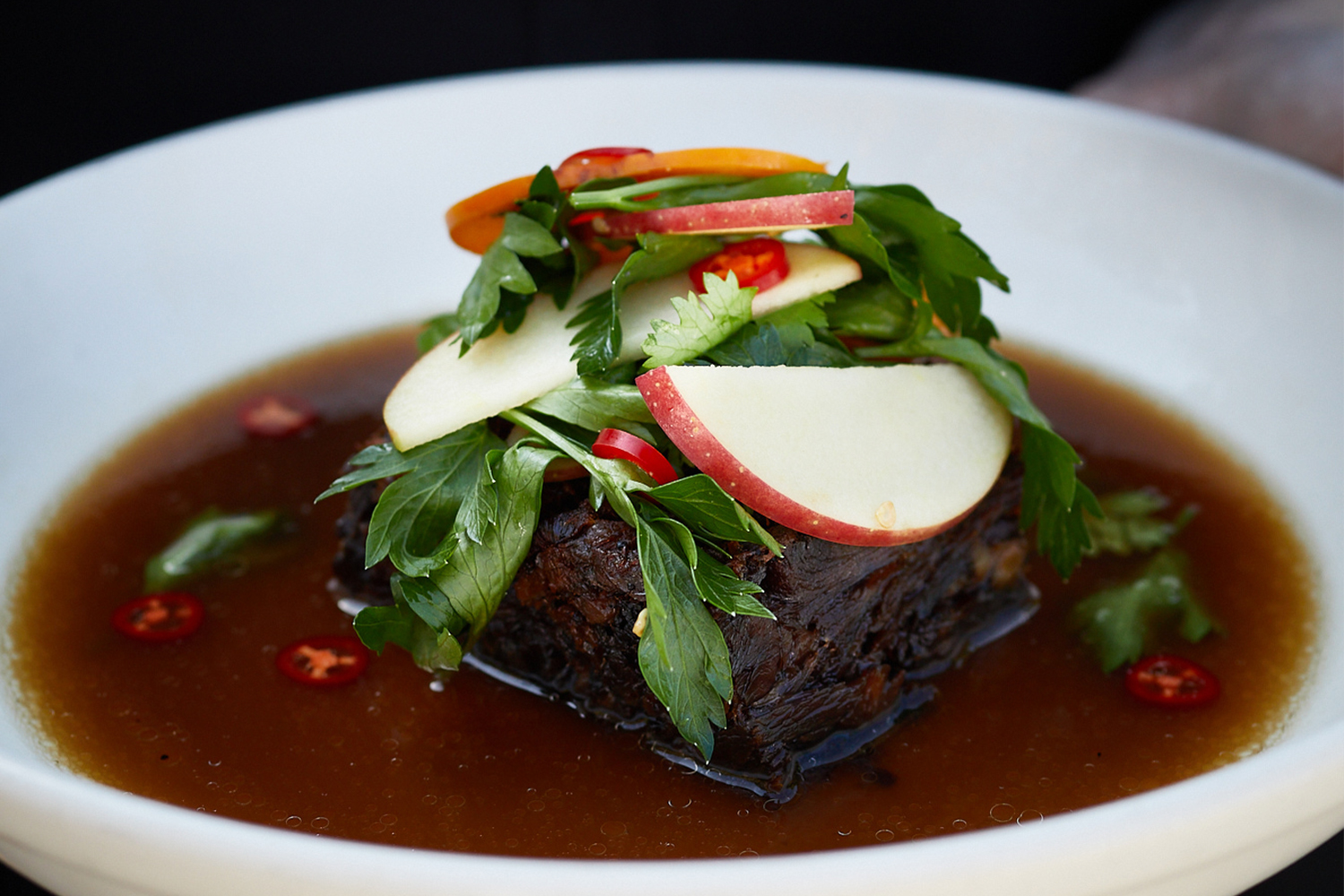
Boar Confit with Persimmons, Apples and Chilies
Serves 4
Cure time: 24 hours
Active cook time: 5 hours
Hot Garlic Cure:
Makes about 2 cups (273 ml)
1 cup (132 g) salt
½ cup (100 g) sugar
1 tablespoon (11 g) granulated garlic
1 tablespoon (5 g) cayenne pepper
1 teaspoon (1 g) dried thyme
1 tablespoon (7 g) black pepper, ground
5 bay leaves
The Confit:
2 pounds (907 g) fatty and/or sinewy wild boar trim, cut into large cubes (bone-in cuts can also be used; increase the amount to 3 pounds (1.4 kg) if using bone-in)
4 teaspoons (20 ml) Hot Garlic Cure
2–3 quarts (1.7–2.6 kg) lard, melted
1 large apple, sliced thinly
2 Fuyu persimmons, sliced thinly, or 2 soft persimmons, halved
1–2 hot chilies, such as serrano or jalapeno, sliced thinly
A few basil, cilantro or mint leaves, or a combination
Juice of 1 small lime
Broth:
1 quart (960 g) hog stock
1-inch (2.5-cm) piece of ginger, peeled and grated (optional)
1 tablespoon (17 g) miso (optional)
Salt and pepper
Instructions:
Mix the cure ingredients together well and store in a tightly sealed jar. This cure will keep for a year and is great on ribs and duck, too.
Make the confit: season the boar trim all over with the hot garlic cure. Set aside, refrigerated, for 24 hours.
Preheat the oven to 300°F (150°C). Place the boar in a pan just big enough to hold all the meat and cover with the melted lard. Cover tightly with aluminum foil and cook until very tender, about 5 hours. Once tender, remove from the oven and remove the boar from the lard to a bowl with a slotted spoon. When cool enough to handle, finely shred the boar with gloved hands.
Line a small square pan with plastic wrap and firmly pack the shredded meat into the pan. Cover the top with plastic wrap and place another pan on top, then put a couple of heavy cans or jars on top to press it down. Refrigerate for at least 12 hours.
Once very firm, remove the chilled confit from the pan and remove the plastic wrap. Cut the confit into 4 even squares or rectangles, trimming edges to make straight sides.
Heat the broth in a small pot and season it with a little pinch of salt. Warm 4 big bowls in the oven. If adding the ginger, do so now. If using soft ripe persimmons, squeeze the pulp out into a small bowl and whisk it until smooth.
Heat a large frying pan over medium-high heat and add the pieces of confit. Sear until deeply browned on one side, then gently turn and brown the remaining sides.
If adding the miso, stir it into the hot broth now and divide the broth between the 4 bowls. Toss the apples, persimmon, chilies, herbs and lime in a small bowl. Place a piece of the seared confit in each bowl, then top with the fruit and chile salad (or persimmon puree). Serve immediately.
This article appeared in an InsideHook newsletter. Sign up for free to get more on travel, wellness, style, drinking, and culture.
